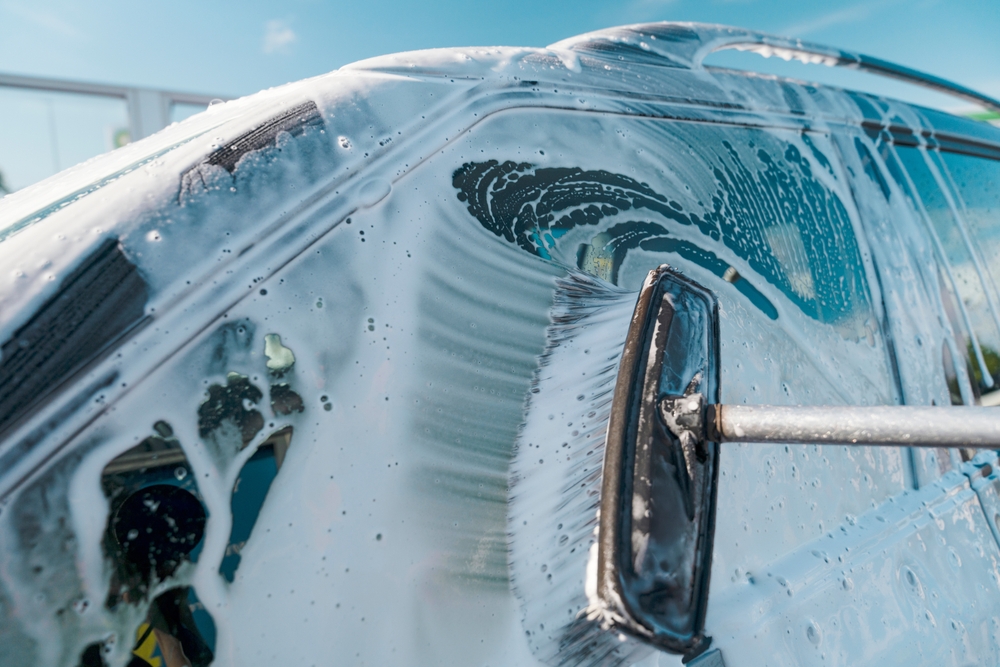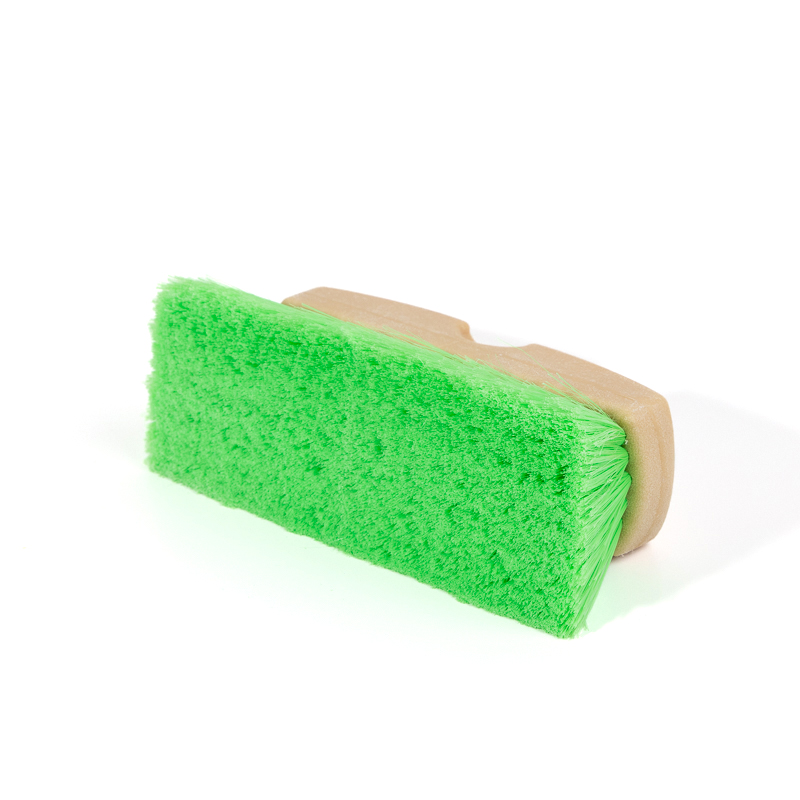
Maintenance Tips for Keeping Your Brushes in Top Condition

Brushes are essential tools across many industries, from automotive detailing to industrial cleaning. To maximize their longevity and effectiveness, proper maintenance is crucial. At Valley Brush Corporation, we pride ourselves on crafting high-quality brushes for a variety of applications, including vehicle cleaning, truck maintenance, cement truck cleaning, janitorial services, and industrial distribution. With the right care, these brushes will continue to deliver top performance, ensuring your investment lasts for years.
In this post, we’ll provide comprehensive brush maintenance tips to help keep your brushes in top condition, ensuring that they remain effective for their intended purpose.
Why Brush Maintenance Matters
Regular maintenance of your brushes can significantly extend their lifespan and maintain their effectiveness. Brushes are often exposed to harsh environments—ranging from dirt and grime to chemicals and moisture—and without proper care, these elements can degrade the brush fibers or the structural integrity of the brush head.
A well-maintained brush not only performs better but also ensures that you get consistent results for every cleaning job. Whether you’re cleaning vehicles, trucks, or industrial equipment, ensuring that your brushes are well-cared for saves time and money in the long run.
1. Clean Brushes After Every Use
One of the most fundamental steps in brush maintenance is cleaning them after every use. Leaving dirt, grime, or chemicals on the brush for extended periods can cause bristles to degrade or become less effective over time.
- Vehicle and Truck Brushes: After cleaning your vehicle or truck, it’s important to rinse the brush thoroughly with water to remove soap residue, dirt, and grime. For more thorough cleaning, use a gentle detergent or brush cleaner to dislodge any stuck debris. If you’ve used the brush to clean mud or dirt, ensure that all the particles are washed out of the bristles.
- Cement Truck Brushes: Cement truck brushes, such as those from our Red Line, often encounter tougher debris like concrete residues. After every use, it’s essential to wash these brushes thoroughly with water and use a scraper if necessary to remove hardened cement. Make sure the bristles are completely clean to prevent any residue from drying and hardening, which can damage the fibers.
- Industrial Brushes: For brushes used in industrial distribution, which often encounter oils, grease, or chemicals, a deeper cleaning may be necessary. Use appropriate cleaning agents based on the type of substance your brush was exposed to. Rinsing industrial brushes with water may not be sufficient—use solvents or specialized cleaners to ensure they are completely free of residue.
2. Dry Brushes Properly
Once a brush has been cleaned, proper drying is essential to maintain the integrity of the bristles and the brush head. Leaving brushes wet can lead to the growth of mold or mildew, or cause the bristles to lose their shape.
- Janitorial Brushes: After cleaning floors or large surfaces, janitorial brushes should be air-dried in a well-ventilated area. Ensure that they are hung with the bristles facing down, so water can drip off rather than accumulating at the base, which can cause the brush head to deteriorate.
- Truck and Vehicle Brushes: For brushes that are often used to clean vehicles or trucks, such as our Blue Line or Green Line brushes, lay them flat or hang them in a way that prevents the bristles from getting bent or damaged during the drying process. Avoid direct sunlight, as this can degrade synthetic bristles over time.
3. Store Brushes in a Safe Place
Storing your brushes correctly ensures that they remain in good condition between uses. Poor storage conditions can cause bristles to bend, become brittle, or develop mold.
- Avoid High Temperatures: Brushes used for vehicle cleaning, such as our Blue Round Brush, should be stored in a dry, cool place. High temperatures can cause synthetic bristles to warp or lose their flexibility.
- Hang or Lay Flat: Always store your brushes either hanging up or laying flat. For example, our Green Bi-Level Brush or Blue Bi-Level Brush should be stored with the bristles facing up or hanging down to prevent them from getting crushed or misshapen.
- Dedicated Storage Area: Especially for industrial brushes, ensure that you have a designated storage area away from chemicals or heavy equipment that might cause accidental damage.
4. Inspect Brushes Regularly for Wear and Tear
Regularly inspecting your brushes can help identify any early signs of wear and tear, allowing you to take corrective action before the brush becomes ineffective.
- Check for Bent or Frayed Bristles: Over time, even high-quality brushes like those from Valley Brush can develop bent or frayed bristles, especially if used frequently. If you notice significant wear, such as bristles splaying outwards or becoming too soft, it might be time to replace the brush. This is especially important for brushes used in cement truck cleaning, as damaged bristles can make cleaning harder surfaces less effective.
- Look for Loose Handles or Heads: For larger brushes, like our Truck Cleaning Brushes, ensure that the handles and brush heads are securely attached. Loose handles can cause inefficient cleaning and even lead to injury if they break during use.
5. Use the Right Brush for the Job
One of the easiest ways to maintain your brushes is to ensure they’re being used for their intended purpose. Using a brush that’s too soft or too hard for a particular surface can lead to premature wear or even damage the surface being cleaned.
- Vehicle Brushes: For example, our Green Rectangular Brushes are ideal for upper body vehicle cleaning because they’re designed for broad surface areas and provide a gentle clean without scratching the paint. Using them on rough surfaces could wear out the bristles prematurely.
- Lower Body Brushes: When cleaning a vehicle’s lower body or undercarriage, using a brush designed for tough areas, like our Blue Line brushes, ensures better cleaning results and reduces strain on the brush. These brushes are built to withstand grime and mud without losing their effectiveness.
6. Rotate Brushes to Extend Their Lifespan
If you use brushes frequently, particularly in professional cleaning or industrial settings, it’s a good idea to have multiple brushes on hand and rotate their use. This ensures that no single brush is overused, and each brush has adequate time to dry and recover between uses.
- Janitorial Brushes: In a high-use environment, such as janitorial cleaning, rotating brushes regularly allows you to maintain a consistent level of performance without prematurely wearing out your tools.
7. Replace Brushes When Necessary
Even with the best maintenance, brushes won’t last forever. Knowing when to replace a brush is crucial for maintaining cleaning efficiency.
- Vehicle and Truck Brushes: If the bristles no longer retain their shape or fluid retention, it’s time to replace your vehicle or truck brushes. Brushes that no longer clean effectively can scratch or damage surfaces instead of protecting them.
- Industrial Brushes: For industrial applications, a worn-out brush may lead to incomplete cleaning, which can impact the quality of the work. Replace industrial brushes when bristles show signs of degradation or breakage.
Proper brush maintenance is key to ensuring the longevity and effectiveness of your cleaning tools. By following these tips, you can keep your brushes in top condition, whether you’re cleaning vehicles, trucks, cement mixers, or industrial equipment. Regular cleaning, drying, and storage, combined with periodic inspections, will help extend the life of your brushes and ensure they perform at their best.
At Valley Brush Corporation, we are committed to providing high-quality brushes that are built to last. If you’re looking for more information on our range of brushes or need replacements, visit our online shop and discover how our brushes can meet your cleaning needs!


